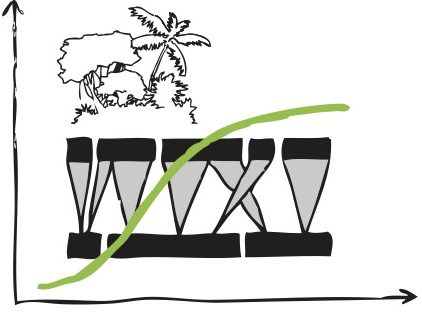My work centers around the theoretical aspects of ecosystem restoration. I use models and computer simulations to find out how ecological communities recover and especially how species interaction networks (re-)assemble after a large disturbance. My overarching goal is to explain observations from the field with theories how they could have emerged. I furthermore want to supplement the empirical work with theoretical expectations. With that, I try to broaden the knowledge about what helps ecosystems to recover and which building blocks are essential for successful ecosystem recovery.
More explicitly, with the models, we want to explain the emergence of certain community features such as the coexistence of specialist and generalists. We also want to find out how different circumstances influence the community assembly of a recovering ecosystem, for example how the biodiversity in the surrounding landscape and the composition of this species source pool influences the biodiversity and species composition in the recovering site.
My focus currently lies on understanding mutualistic interactions between plants and animals during ecosystem recovery. This interaction type is very common in ecosystems and important for many ecosystem services such as pollination and seed dispersal and helps to sustain terrestrial biodiversity. The models I use there are based on trait-matching between plants and animals, and species can be specialists or generalists in their interaction.
Furthermore, I also support all the other subprojects of the REASSEMBLY research unit that deal with further types of interactions (e.g. predator-prey) with theoretical considerations and apply my models to help answering their specific research questions.

